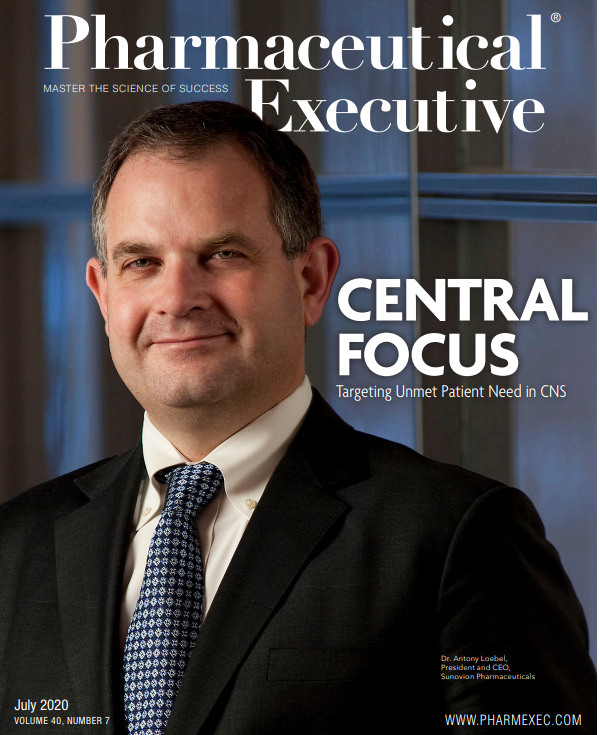- Sustainability
- DE&I
- Pandemic
- Finance
- Legal
- Technology
- Regulatory
- Global
- Pricing
- Strategy
- R&D/Clinical Trials
- Opinion
- Executive Roundtable
- Sales & Marketing
- Executive Profiles
- Leadership
- Market Access
- Patient Engagement
- Supply Chain
- Industry Trends
Is Drug Production Heading Back to Europe From Abroad?
Pandemic sparks call for European manufacturing renaissance.
Coronavirus has disrupted orthodoxy so much that ideas considered heretical a few months ago are today quite unremarkable. A radical U-turn on the organization of European pharmaceutical manufacturing policy is now

being discussed just as if it were one more part of the new normal-and could lead to major change.
The pandemic has brought to the boil long-simmering concerns in Europe that the drug industry business model is largely to blame for the growing problem of drug shortages. Last year, as the heat rose on non-availability of many medicines and the risks of over-reliance on single-source supplies, European health authorities tacitly admitted that action might be needed-and took the traditional action-avoidance route of commissioning a report.
But that was before COVID-19. The pandemic has spotlighted inadequacies in the business model for Europe’s drugs. Not just the inability to come up with cures, but the sector’s lack of self-reliance, and its heavy dependence on foreign manufacture for everything from active ingredients to finished products. It didn’t take long for the idea of a state-directed European manufacturing renaissance to become a rallying cry for everyone with a grudge against the industry-and to win support even among some of its allies.
The European Parliament was quick to amplify the arguments. A French oncologist, Véronique Trillet-Lenoir, who is a prominent liberal MEP, was among the first to express alarm at “the vulnerability of Europe’s supply chain for medicines,” and to call openly for “the repatriation to European territory of the manufacture of active ingredients”-more than three-quarters of which she claimed takes place outside the EU. Her ambitions go beyond repatriating active pharmaceutical ingredient (API) manufacture: the EU should “encourage healthcare industrialists to relocate production sites in Europe while promoting innovative and reactive technologies.”
The EU’s best official data is that 90% of APIs for generic medicines are sourced from India and China. And although many APIs for innovative medicines are produced in Europe (which also supplies 31% of APIs for the US), “even when APIs are produced locally, we know that most of the raw materials, for both generics and innovative medicines, are sourced from China,” the Commission admitted as the debate became more intense during the spring.
Since then, the EU has taken more incisive steps, with its trillion-euro recovery plan-which includes an unprecedented $10 billion for a new health program that aims at “availability and accessibility of medicines,” a risk-sharing agreement with manufacturers to promote European production of a COVID-19 vaccine, the announcement of a new pharma strategy with an explicit mention of encouragement and support for “EU manufacturing capacity for APIs and pharmaceutical starting materials,” and promises of major new research support for the European drug industry.
When European health ministers met in June to review these initiatives, they confirmed not only that “Europe needs to give much higher priority to health,” but that “stronger and more resilient health systems across the EU” will need “improved availability of medicines,” and “limiting the dependency of supply chains on third-world countries.”
Meanwhile, within the European Parliament, formal debates are getting underway on proposals that range from new controls on private-sector drug prices to the creation of European non-profit drug manufacturers. The EU should “take whatever action is needed to restore European health sovereignty and local pharmaceutical manufacturing,” including tax and financial incentives and state aid “to encourage producers to locate their operations in Europe” for everything from compound manufacturing to the packaging and distribution. The European Commission should already start “to map out potential production sites in the EU.” As a sign of the times, these ideas come from an MEP of the center-right, Nathalie Colin-Oesterlé, who is the parliament’s lead on the subject. Nearly 800 amendments have been proposed to her text, most of them aimed at intensifying the calls for repatriating drug production to Europe, and many of them critical of the self-interest of “pharmaceuticals giants” that have-argue their detractors-relocated 40% of their production beyond the EU, simply to boost profits.
Throughout, the main European drug industry associations, keen to resist excessive state interference, have been at pains to offer reassurance on the strength of Europe’s manufacturing base. Research-based firms, for example, argue that three-quarters of the APIs for on-patent products are sourced from within the EU-27 and the UK, with a tenth from the US, and less than a tenth from Asia.
Reflector is Pharmaceutical Executive’s correspondent in Brussels

IMF Chief Medical Officer Discusses Global Initiatives to Improve Myeloma Treatment
August 20th 2024In an interview with Pharm Exec Associate Editor Don Tracy, Joseph Mikhael, chief medical officer, IMF, offers a glimpse at multiple initiatives that the IMF is working towards to improve myeloma treatment globally.
